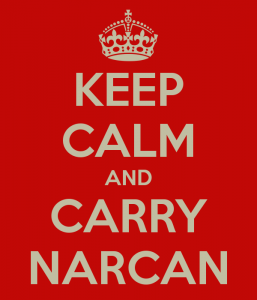 We’re seeing some pushback from first responders, particularly law enforcement, to administering naloxone at the scene of an opioid overdose. Their objection: Why bother? They’re just going to do it again. It’s a waste of our time and energy.
We’re seeing some pushback from first responders, particularly law enforcement, to administering naloxone at the scene of an opioid overdose. Their objection: Why bother? They’re just going to do it again. It’s a waste of our time and energy.
Some have even referred to OD rescue as enabling. That’s a gross misinterpretation of the term’s meaning. When we advise friends and family to stop rescuing their loved one from problems related to substance use, it’s to motivate the addicted person to accept treatment. Failing to administer a lifesaving antidote, on the other hand, effectively eliminates the possibility of recovery. Ever again.
Besides, the whole purpose of emergency services is to prevent fatalities. It’s not the time or place for complex ethical decisions. What about a heart attack victim who was a smoker? Do we want the EMT on the spot to be the one who decides whether he or she lives or dies?
Still, we can empathize with the frustration of having to deal with the repeat crises that characterize some cases of addiction. It is frustrating. Nurses and doctors experience the same feelings about homeless alcoholics they see in the ER every Saturday night.
I recall admitting one patient, a consulting engineer of some reputation, to detox, and calling up his file from Medical Records only to discover some 50 prior admissions, all alcohol-related , all to that one hospital. I’m sure other institutions were involved as well.
The head nurse, who knew this patient well and was herself in recovery, decided to try a version of shock therapy. On his way out the door after just 48 hours– he rarely finished a complete detox– she approached with brochures for a local funeral parlor. “What this for?” he asked. “Just thought you might need these in the near future,” she shrugged.
He was furious. “How dare you!” he shouted at her back as she retreated to the nurse’s station. When he got home, he began writing indignant letters to the hospital administration. She got called on the carpet but gained support once the financial office realized this patient had cost the hospital millions in uncompensated care over the years.
Hospital administrators have always understood the language of money.
The point is that even after 50 admissions, this educated professional gentleman still could not see the danger in his future. Everyone around him could see it, but he couldn’t. He wasn’t doing this to annoy or frustrate others. He was stuck in a cycle that represents a form of insanity. And blind to it.
So are many opioid users. It’s not something to underestimate, any more than we’d understate the impact of visual and auditory hallucinations on someone with schizophrenia.
Of course, the real solution to the dilemma of repeat crises is to interrupt substance use and engage the user in treatment– whether that’s inpatient or outpatient, with or without medication. And most important, keep them engaged. To do that, we have to have a continuum of affordable treatment options. And since many opioid users are without adequate financial resources, society will have to provide funding. Yes, it will cost money. Yes, that means finding the money to spend.
But look at it this way: it’s one of the few ventures where the return really does justify the investment.


 — October 19, 2017 @
— October 19, 2017 @ 







